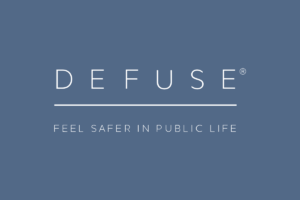For many people, the quest is to amass as many followers on Social Media as possible. The lucky ones monetise their profiles making a profession from it whilst for others it just boosts their egos. But how many understand the consequences and risks that go with it.
Whilst I can’t prove this, it is likely that…
If you have hundreds of followers, you are likely to have someone odd following you
If you have thousands of followers, you are likely to have someone creepy following you
If you have hundreds of thousands of followers or more, you are likely to have someone dangerous following you.
If you have a lot of social media traffic, you are likely to be inundated with abusive, threatening content. Within all that noise, there are likely to be some clues that those who are dangerous and becoming more dangerous.
There has been significant research into communicated threats towards public figures, influencers and celebrities and in order to defuse these threats you must understand the nuances.
An important theory proposed by Fein and Vossekuil was that those who make threats don’t necessarily pose them. They corroborated this in the Exceptional Case Study Project where they found that none of the attackers studied communicated a direct threat to the target or to law enforcement.
In terms of the purpose of the project it directed that attention should be focused on those who pose a threat, whether or not they have made a threat.
This finding is supported by the study into the role of mental disorder in attacks on European politicians 1990-2004 where they could find no evidence that the person targeted was subject to a direct threat. Human behaviour is more complicated and it would be risky for a security manager to assume this theory as always true as a person of concern (POC) who threatens can also attack and the Fixated Research Group argued that those who breached the security were more likely to be a threat than those who simply approached.
Calhoun & Weston went on to provide a term for this theory, ‘Hunters and Howlers’ and suggested that “Hunters Hunt and Howlers Howl”
These terms are somewhat simplistic and misleading as whilst in general it can be said to be true, some who ‘howl’ stop, and start to ‘hunt’ and there will be some examples where an attacker has previously made a threat, as it leaked it to another but not directly to the target. Equally if this concept was 100% accurate, it would be very easy for a potential attacker to make a direct threat in order to persuade law enforcement that he was not actually posing a threat, only to enabling him to do so.
This was expanded upon by Warren et al who further differentiated into five types of threateners:
a) Screamer: – whose threats are usually expletives, made emotionally and in the moment, in context to the situation where the target of their threats understands that no harm is intended.
b) Shockers: – these threats are intended to induce fear and have an immediate impact and often used against those who are dominant over them.
c) Shielders: – this is a defensive threat, intended to ward off an aggressor
d) Schemers: – these are conditional threats, intended to influence or coerce and promise to engage unless the other person complies.
e) Signallers: – these promise a future harm to the target. They state an intention to harm.
Whilst all threats can induce fear, and often that is their only intention, the signallers promise or threaten future harm, Warren et al argued that those who genuinely intend future harm rarely signal that intention and put themselves at a disadvantage. What is known, is that threats can be veiled and infer violence and whilst they induce fear, they are no more likely to be acted upon than direct threats. A direct threat has been defined as ‘an unambiguous statement to a target or to authorities of intend to do harm’ The theory that those who make such threats not posing a threat is increasingly true the more distant the relationship is between the two parties. Equally, where an element of intimacy exists, whether real or perceived, the threat increases. Almost exclusively, studies found no relationship between direct threats and attacks on public figures, however what they did find was that quite often the attacks were preceded by warning behaviours.
The fact is that most newspaper reports quoting academic studies completely miss the point. Most academic studies use key word searches, which may find abuse but are very unlikely to find real threats. This is where the real expertise is required, almost anyone can search for keywords, but understanding what to actually look for and then knowing how to interpret that is where the real skill lies.
This is where Defuse offers real added value…not only do we know what to look for but know how to analyse whether what we find is a genuine threat or just noise!
Contact Defuse for more information.



